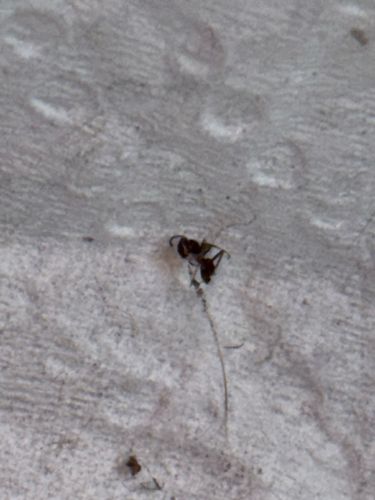Ant
Scientific Name: Formicidae
Order & Family: Hymenoptera, Formicidae
Size: Most ants range from 2 to 7 millimeters (0.08 to 0.28 inches) in length, though some species can be much larger, up to 30 millimeters (1.2 inches).

Natural Habitat
Ants are highly adaptable and can be found almost anywhere on land, including forests, deserts, urban areas, and even inside homes. They typically build nests underground, in wood, or in sheltered spaces.
Diet & Feeding
Ants have a highly varied diet, depending on the species. Many are omnivorous, feeding on nectar, seeds, fungi, other insects (both living and dead), and food scraps. Some are specialist predators, while others are scavengers or cultivate fungi.
Behavior Patterns
Ants are social insects that live in colonies, which can range from a few dozen individuals to millions. They exhibit complex social structures with a queen, workers, and sometimes soldiers. They communicate through pheromones, engage in advanced foraging strategies, and often build elaborate nests. Many species work cooperatively in tasks like food collection and nest defense.
Risks & Benefits
Risks: Some ant species can bite or sting, causing minor irritation or allergic reactions. They can also be considered pests when they invade homes, contaminate food, or damage property (e.g., carpenter ants). Benefits: Ants play crucial roles in ecosystems, including soil aeration, nutrient cycling, seed dispersal, and pest control (by preying on other insects). They are an important food source for many animals.
Identified on: 9/27/2025